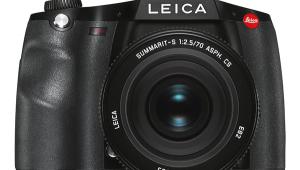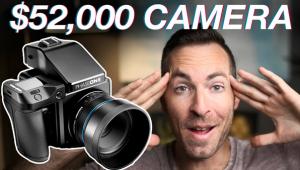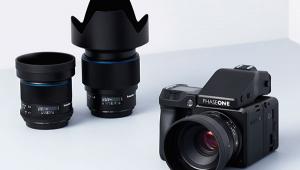Hands-On Impressions of the New Fujifilm GFX Medium Format Mirrorless Camera
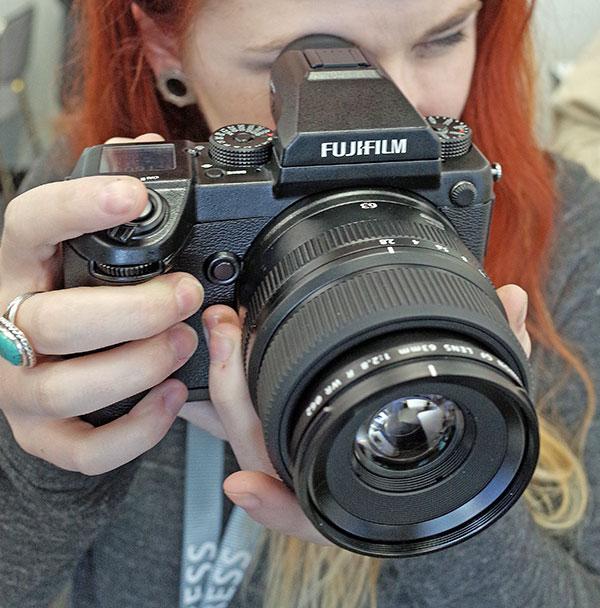
Arguably, the biggest camera news at this year’s photokina show in Cologne, Germany was the announcement of the new Fujifilm GFX, a medium format mirrorless camera, which was unveiled to much fanfare on Monday. Shutterbug was one of a handful of media outlets to get our hands on a prototype of the 51.4-megapixel GFX and try it out for about half an hour in a conference room at the show.
Here are a few “hot takes” on the camera, which has the official model name of Fujfilm GFX 50S. To see a rundown of the topline specs of the Fujfilm GFX and the three “G-mount” lenses announced at the show, read our news story from Monday.
The camera is slated to ship in early 2017 and though no official pricing has been announced, at the press conference to unveil the GFX, a Fujifilm executive said it will sell for “way under $10,000.” What that means, exactly, we have no idea but we’re guessing it may go for around $8,000 (but that’s only a guess).
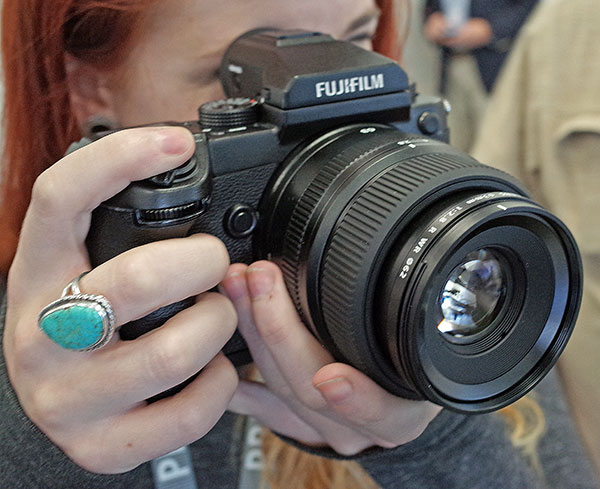
Build
During Monday’s press conference to announce the Fujifilm GFX 50S, the camera seemed to have a distinctive medium format-style appearance, i.e. big and serious. But when I actually got my hands on the GFX it felt more like what it really is: a cross between a digital SLR and a mirrorless camera. (Incidentally, a Fujifilm staffer told us the “S” in the GFX 50S model name stands for “SLR.”)
The Fujifilm GFX 50S is lightweight and fairly compact for a camera that houses a large 43.8 x 32.9mm CMOS sensor. The camera’s sensor size was a much discussed topic during photokina, particularly since it’s slightly smaller than traditional medium format digital cameras.
The GFX’s imager is, however, almost the exact same size as the CMOS sensor that’s in the Pentax 645Z, which is also 51.4MP in resolution. (It’s very likely that the two cameras share the same Sony-made chip, with some minor tweaks.)

The Fujifilm GFX’s camera body only has very basic weather sealing that’s similar to other models in the company’s X-series. The 3-inch screen on back is decent if not spectacular (Fujifilm did not provide us with specifics on the screen, most likely because the prototype camera we tried out is not close to the final version.)
Handling
The comfortable, ergonomic handgrip and large, inviting shutter button were our favorite design elements of the Fujifilm GFX.
Unlike some over-thought cameras these days, the GFX 50S was designed with the photographer in mind. It’s a retro-looking camera that behaves like a modern, luxury automobile.
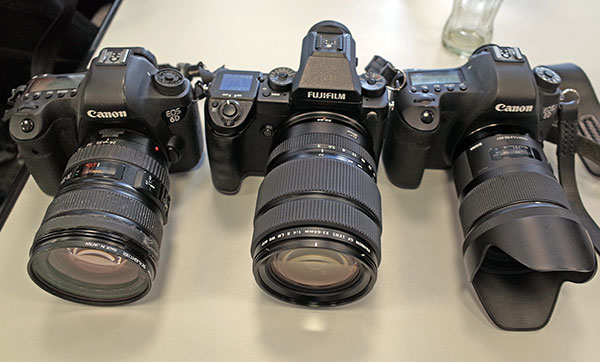
The ample electronic viewfinder, meanwhile, was clear and easy to see through and we were thrilled to hear that an optional accessory will allow you to use the EVF as a rotating, waist-level finder to shoot with the camera from a variety of angles while still being able to frame your shot.
Performance
It’s really hard to comment, seriously, on what type of performance you’ll get out of the Fujifilm GFX since we shot with such an early, prototype version of the camera. I will raise one point though that could be a concern.
During a Q&A session with Fujifilm executives prior to being handed over the keys to the GFX, a reporter asked what type of autofocus system this medium format mirrorless camera used: phase detection; contrast detection; or a hybrid of the two? The answer surprised many journalists in the room: the GFX 50S will use contrast detection AF, according the Fuji executives.

As anyone who has shot with a mirrorless camera that uses contrast detection AF likely knows, it’s slightly older technology than phase detection and it can be quite a bit slower. Some would argue, however, that it’s more accurate than phase detection but that’s open for debate. When shooting with the GFX 50S prototype, it was noticeably slow to lock in focus, which, in this day and age, would be a disappointment if this carries over to the final version of the camera.
Again, it’s way too early to pass judgment on the GFX’s performance, but I do hope Fujifilm is able to significantly tweak the algorithm on the camera’s contrast detection AF, to speed it up. Someone remarked that this won’t be as much of an issue for studio photographers but that’s a rather limited niche these days. The DSLR-style GFX 50S is clearly aimed at a much larger group of photographers than just studio shooters and they’ll be expecting performance on par to a DSLR or, at the very least, a pro-level mirrorless camera, especially at the expected asking price.
Having said all that, we can wait to get a final version of the Fujifilm GFX 50S and test it out in real conditions. But I guess we'll have to wait till some time in 2017.
- Log in or register to post comments

